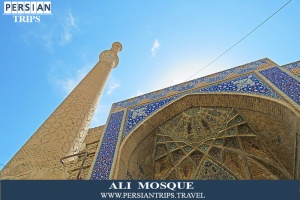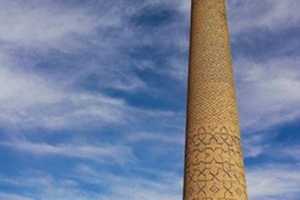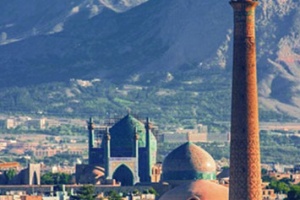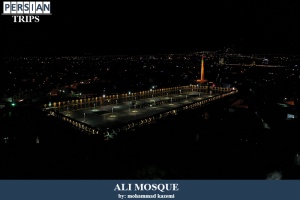Ali Mosque
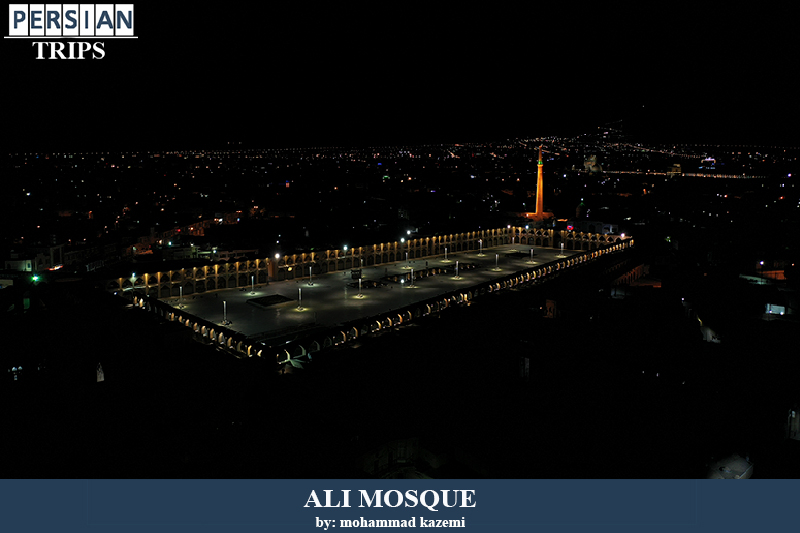
Ali Mosque and Minaret of Isfahan was built near the Isfahan Grand Mosque during the founding period of the Safavid dynasty, namely Shah Ismail (in 1523).
This building was built on the site of a mosque belonging to the Seljuk era, which was destroyed during the Safavid period. From the Seljuk period mosque, only the old brick minaret, which is about forty meters high and decorated with the Kufic inscription and tile, remains. In a way, it can be said that this famous mosque owes its fame to this minaret. Ali Mosque is built in the form of four porches and its south porch is larger than other porches and the domed nave of the mosque is located behind the south porch. Its dome is decorated with tiles on the outside and gypsum moqarnas on the inside, and an inscription in thuluth script, including verses from the Qur'an on a gypsum background, is dated 1523. The entrance of Ali Mosque in Isfahan is decorated with beautiful tiles and two rows of inscriptions in the style of Shamsuddin Tabrizi. The first row inscription includes verses from the Quran written in thuluth script on azure tiles and the second row inscription includes the name of Shah Ismail Safavid and the founder of the building, Mirza Shah Hossein Isfahani. Ali Mosque is considered as one of the most important mosques of the Safavid period in terms of architecture and its decorations at the entrance and the gypsum moqarnas inside the dome and its tiling.
Features of the minaret of Ali Mosque
Regarding the features of the minaret of Ali Mosque in Isfahan, it should be mentioned that this minaret consists of three parts and is made of brick and gypsum mortar. The original height of the minaret was about fifty meters and now it is about forty. The diameter of the minaret of Ali Mosque is six meters above ground level. And it becomes thinner from the bottom up, the exact year of construction of the minaret of Ali Mosque is not known. But according to experts, the year of its construction can be estimated between the years 1121 to 1131. Minaret decorations include rich porcelain bricks with various and beautiful designs. The minaret of Ali Mosque has five inscriptions in Kufic script, three of which are written with turquoise tiles. The other two inscriptions, one with plaster and the other, which is lower than the other four inscriptions, are written with carved bricks. The expressions written on these inscriptions are in Kufic script and Banai. On the first inscription in Kufic script with turquoise tiles on the brick body, the phrase La ilaha illa Allah is repeatedly engraved. The second inscription also includes the repetition of the phrase Al-Mulk Allah in Kufic script with turquoise tiles under the minarets. The phrase La ilaha illa Muhammad Rasoolullah also appears in turquoise on the third inscription. The fourth inscription is in Banai script and by combining plaster and brick, it shows the phrase Hu Allah Al-Dhi La ilaha illa Hu. And the fifth inscription is the same as the fourth inscription in Banai script and presents verse 16 of Surah Al-Imran with prominent brickwork. By participating in Persian trips tourism tours, you can visit Ali Mosque and Minaret of Isfahan and other attractions of Isfahan province and leave an unforgettable memory.
Tags: Isfahan Province, Isfahan Attractions, historical attractions of Iran, Mosques in Iran











